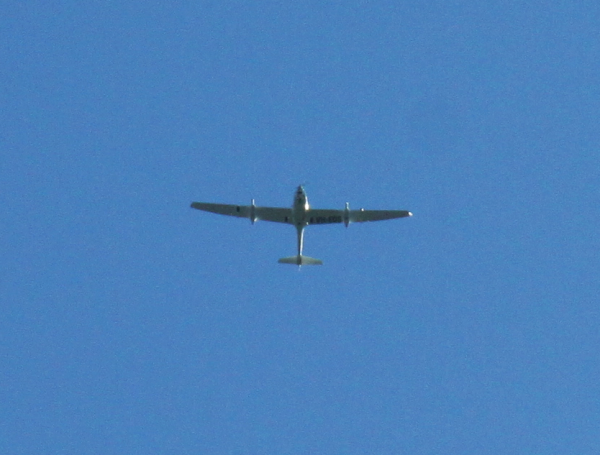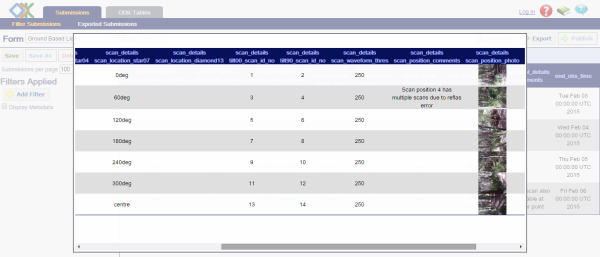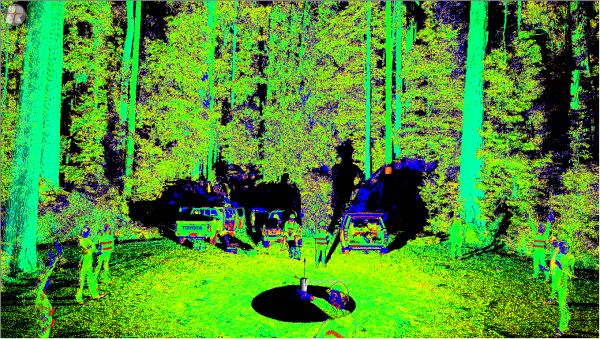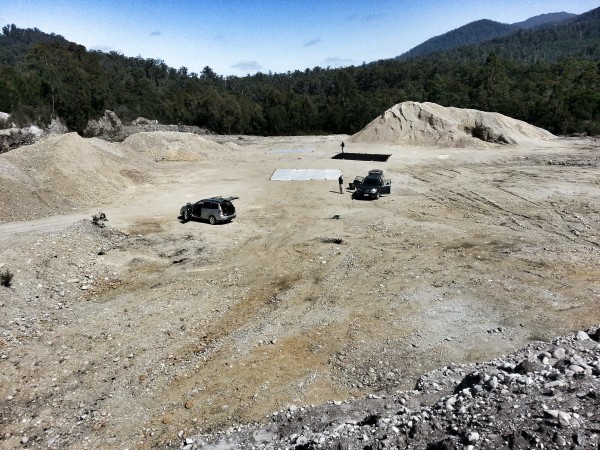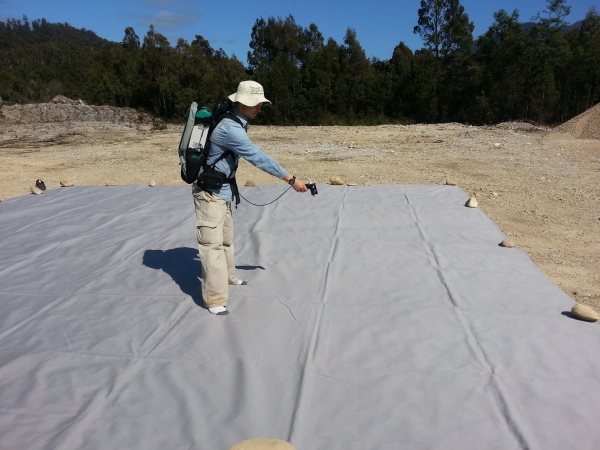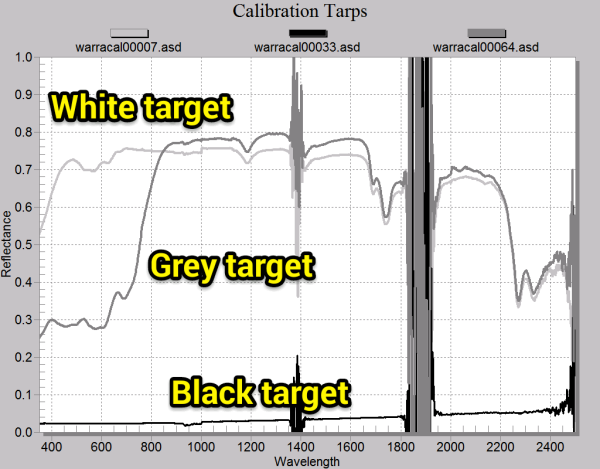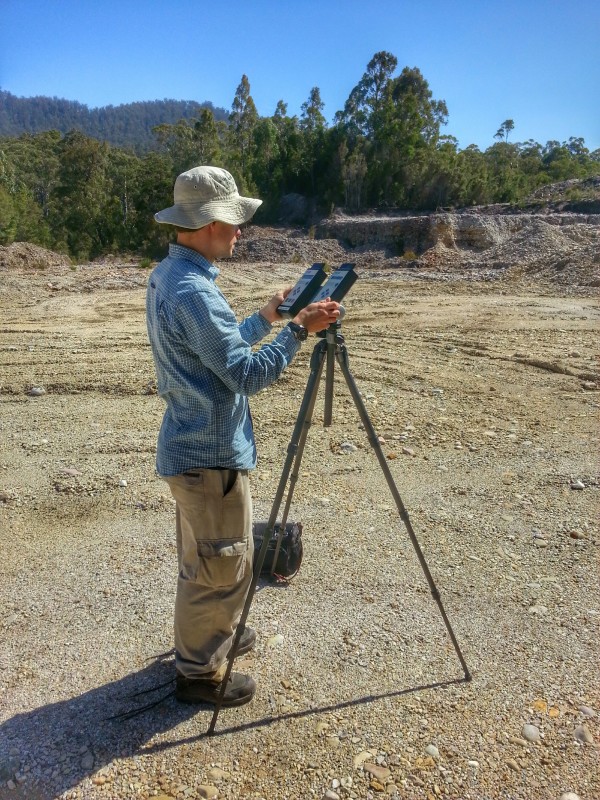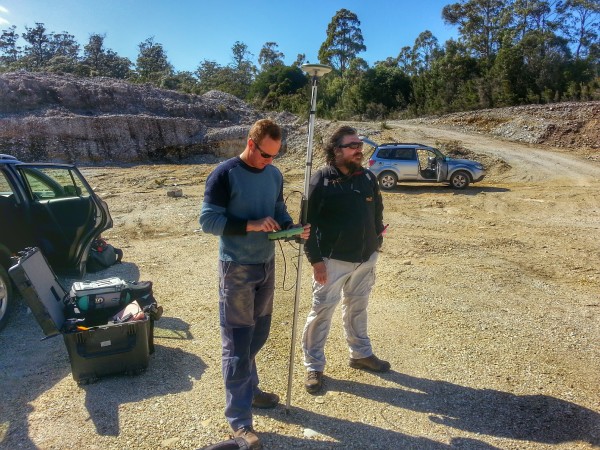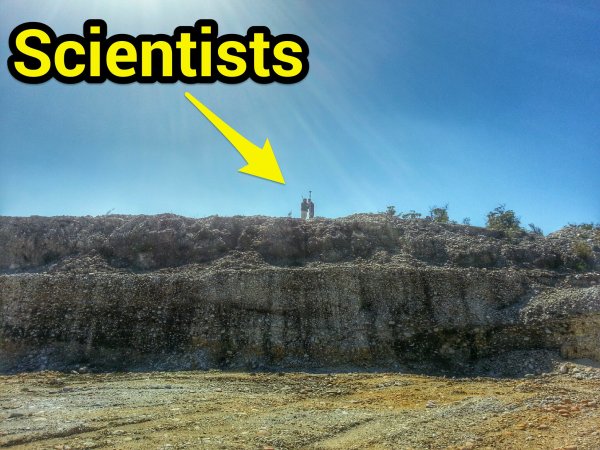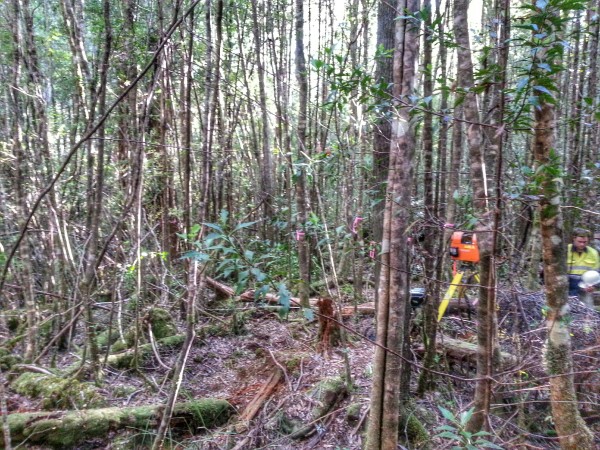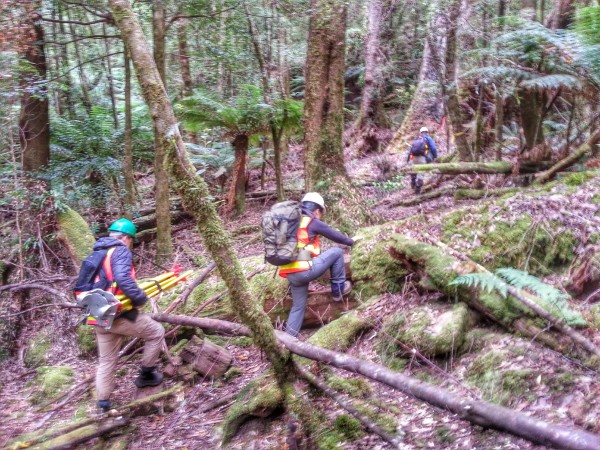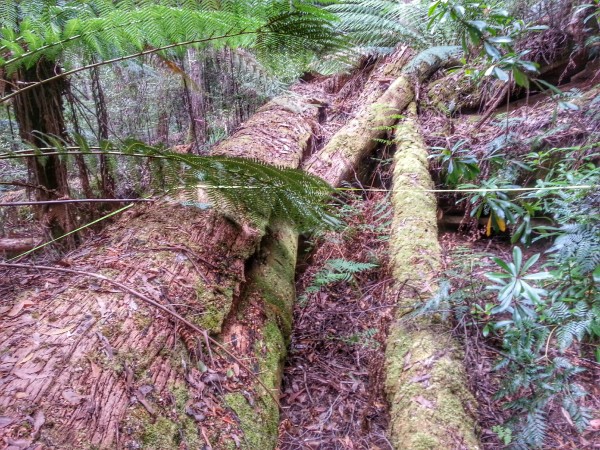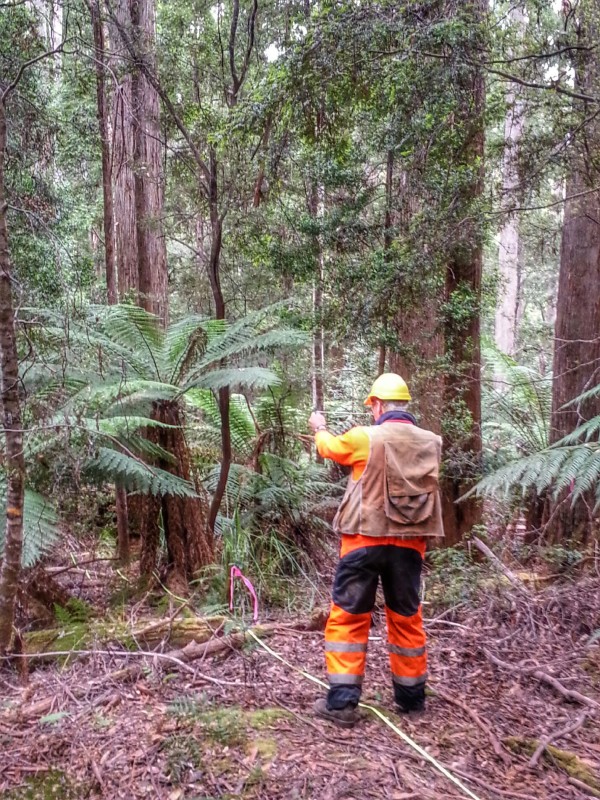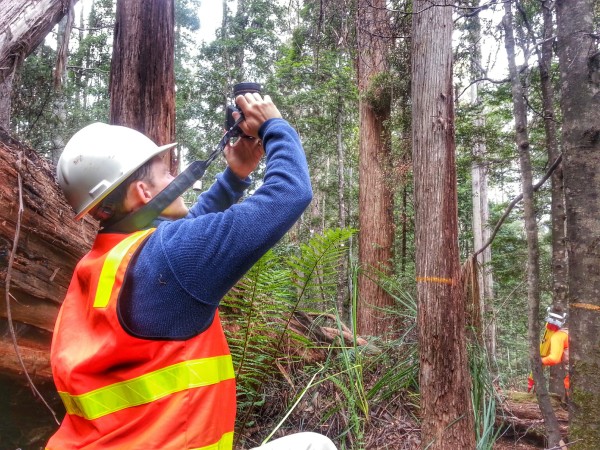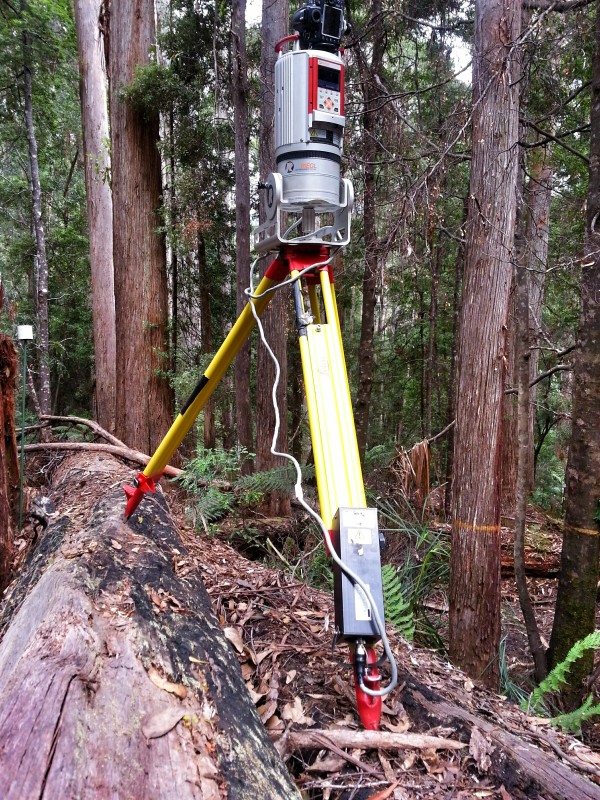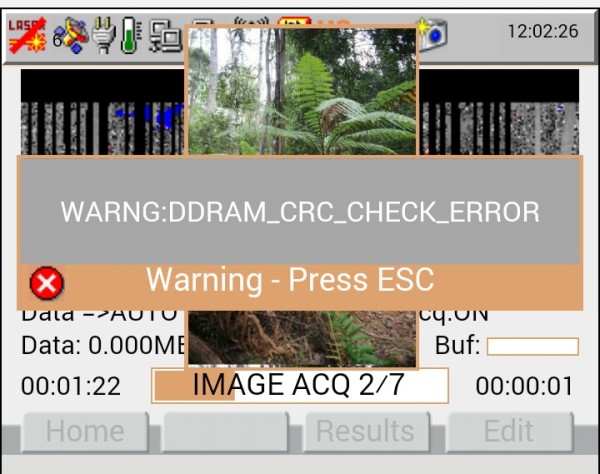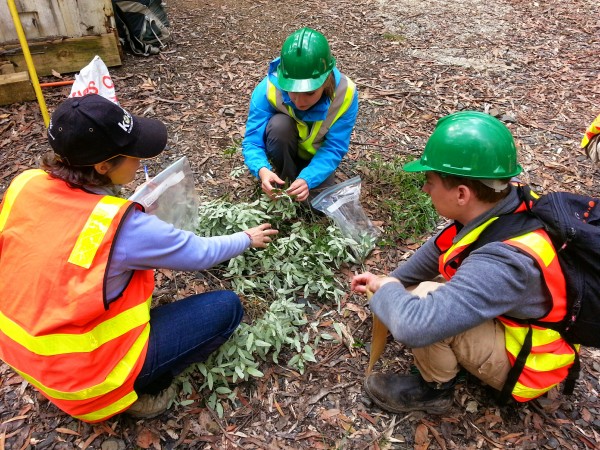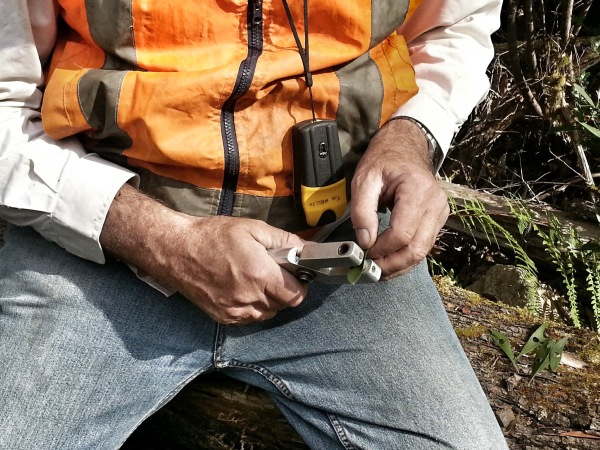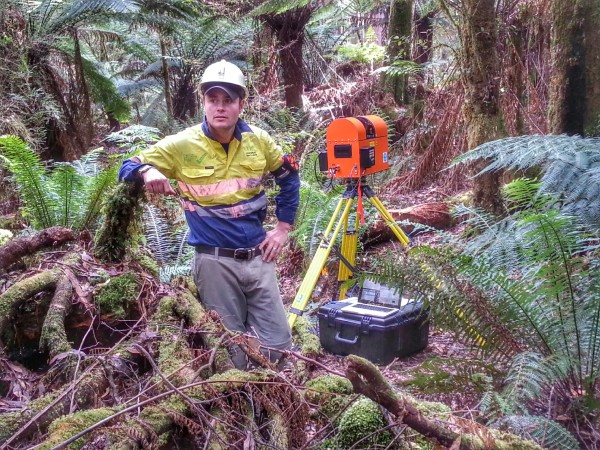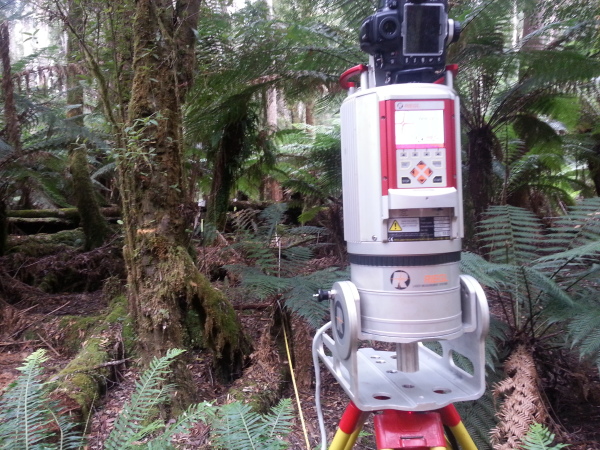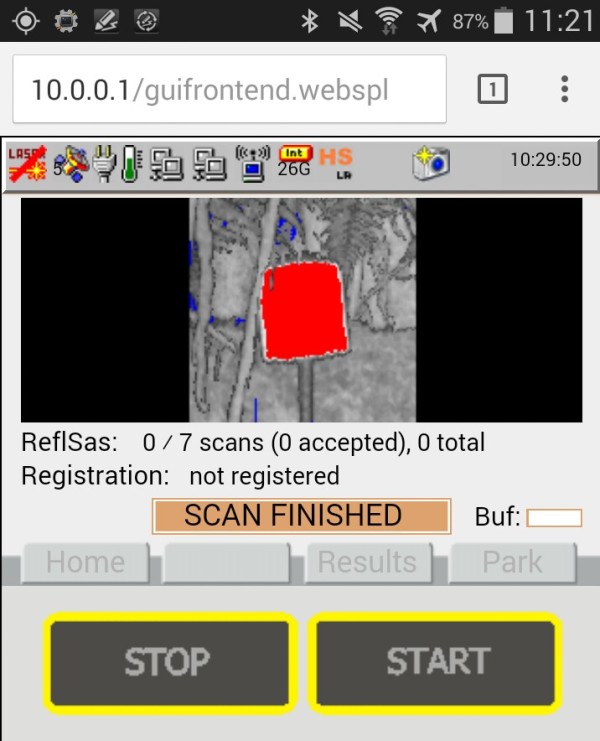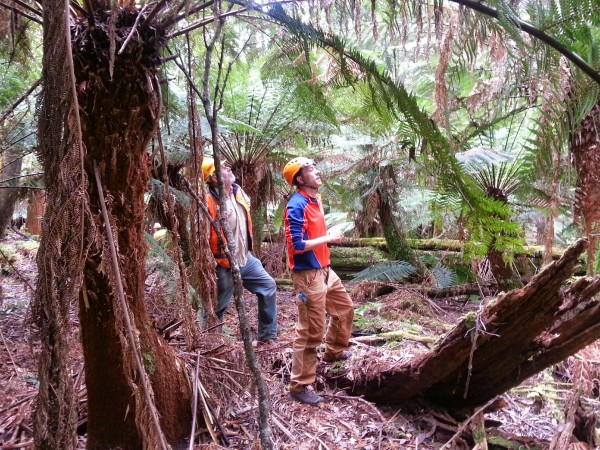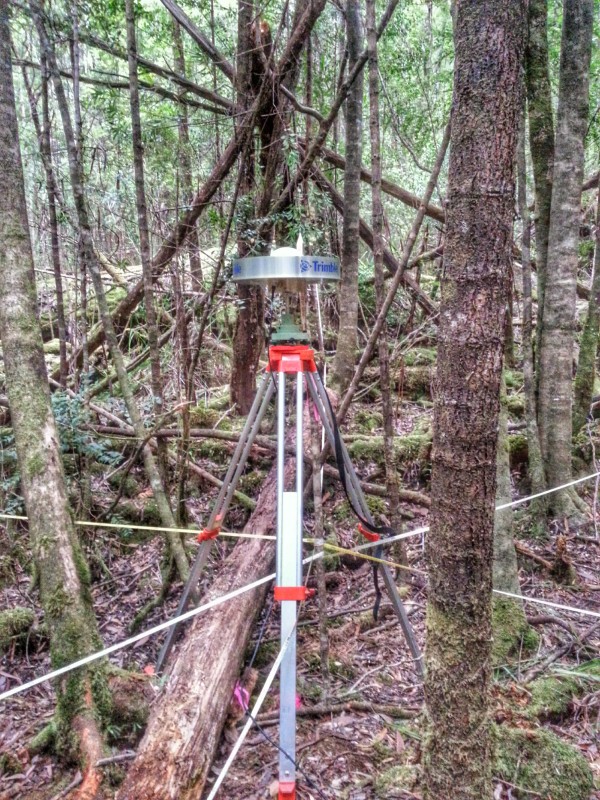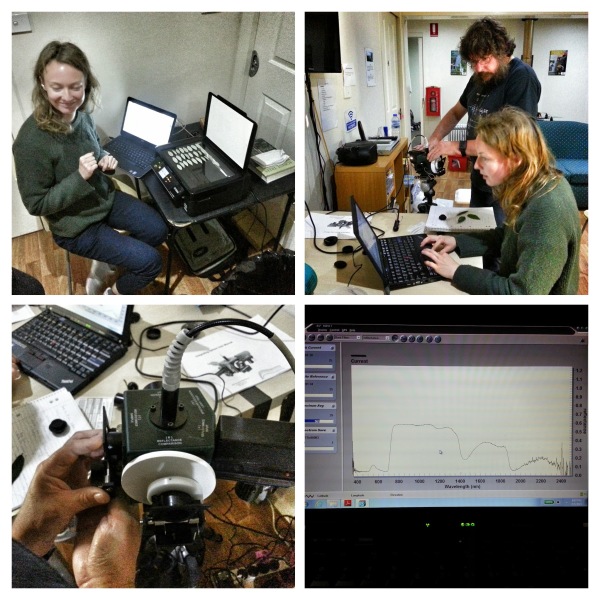Day three and the teams went to several sites. We headed off to a pretty remote site requiring a one kilometre walk in over fairly rugged terrain carrying all the gear.
Once on site we rolled out the tapes. We go in a straight line out 50m on 6 radials from the centre point.
A lot of the work we do is designed to link traditional forest measurements with the lidar sensors. Here we are collecting tree basal area using a wedge.
One of the traditional first light climate measurement is hemispherical photography. We've been lucky enough here to have cloudy skys which give diffuse conditions during the day, negating the need to be out at dawn or dusk.
This site had a fair bit of slope and debris so on places we had to use rather 'interesting' scan locations.
Because of this (or more likely due to the density of the vegetation ;) we had more than our fair share of scan errors today. Capturing data at the rates we get in these forests pushes the software and ends up finding the bugs.
After successfully completing the site and walking out we headed back to the Flux tower to catch up with the leaf sampling team who had been collecting samples from all the key species across the site.
They extract pigment samples ASAP and freeze them in liquid nitrogen. The remaining leaves head back to the camp for spectra to be taken through the evening by the ASD spectometer with an integrating sphere attachment.
DWEL, the TERN/CSIRO dual wavelength lidar was also busy today at the Flux tower sampling across the transects to match up with the field data collected by the team yesterday. Keep an eye on the DWEL blog!
Tomorrow we're hoping to have awesome clear sunny conditions for the airborne hyperspectal data collecrion. Fingers crossed...
